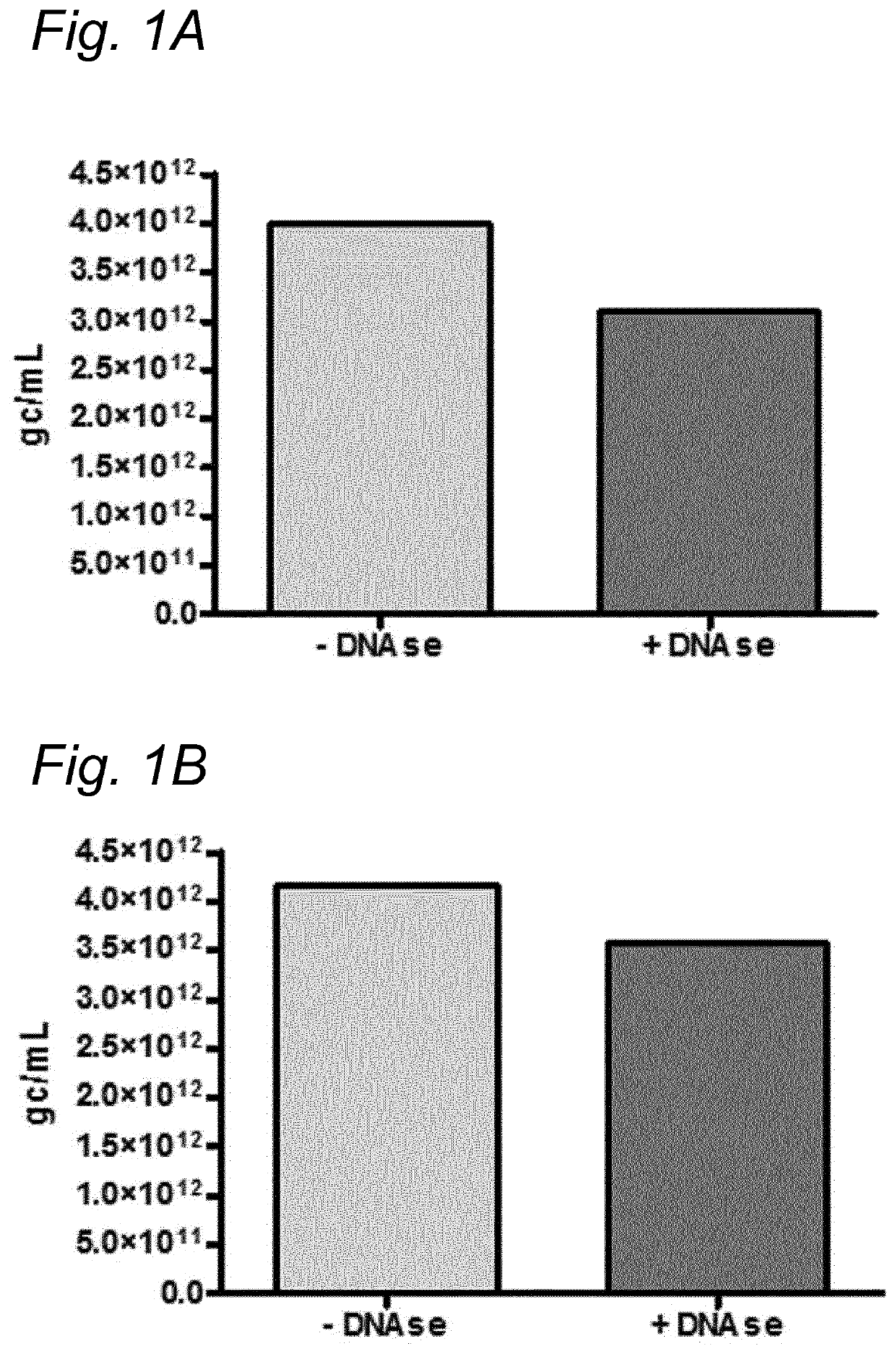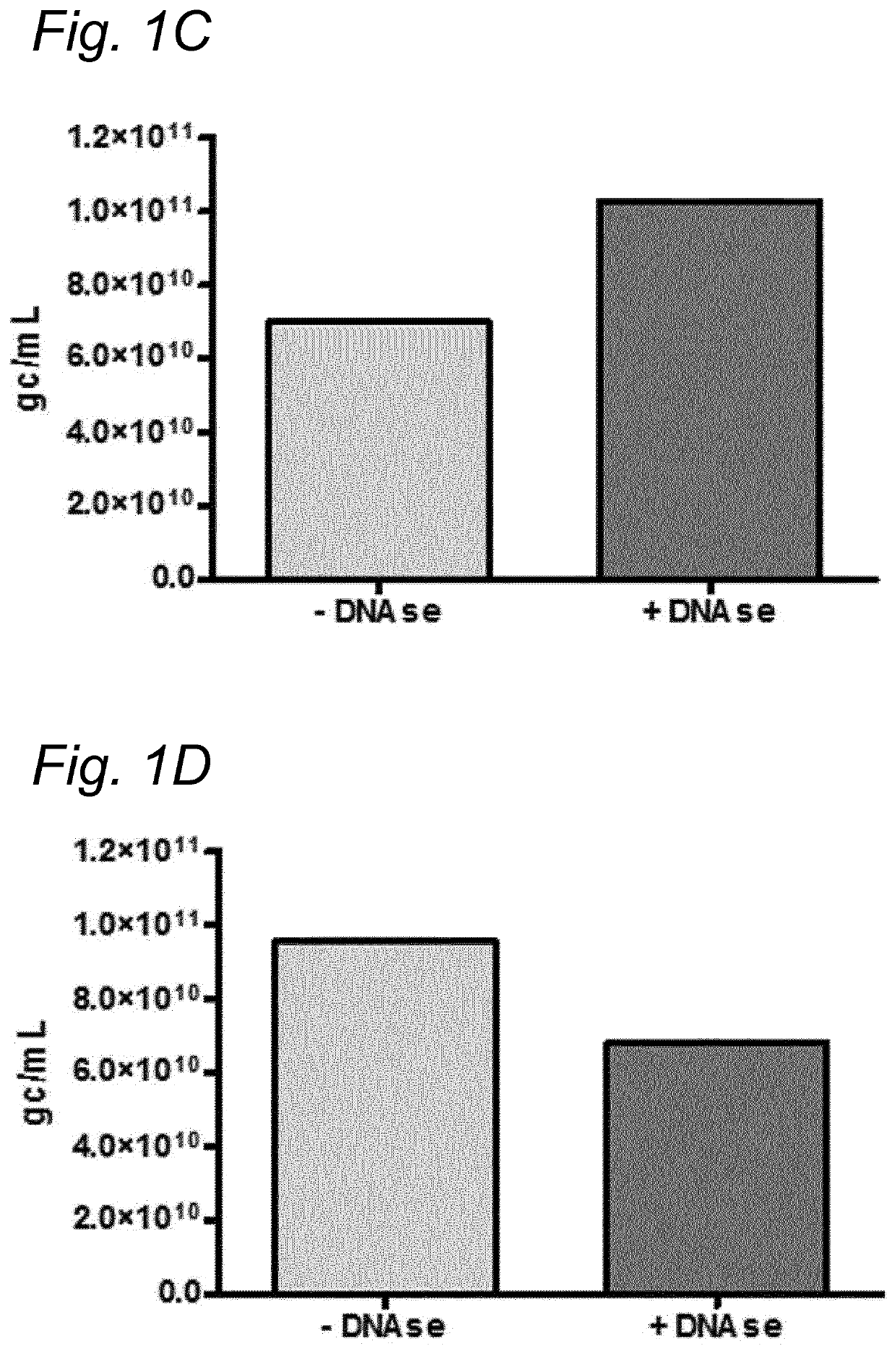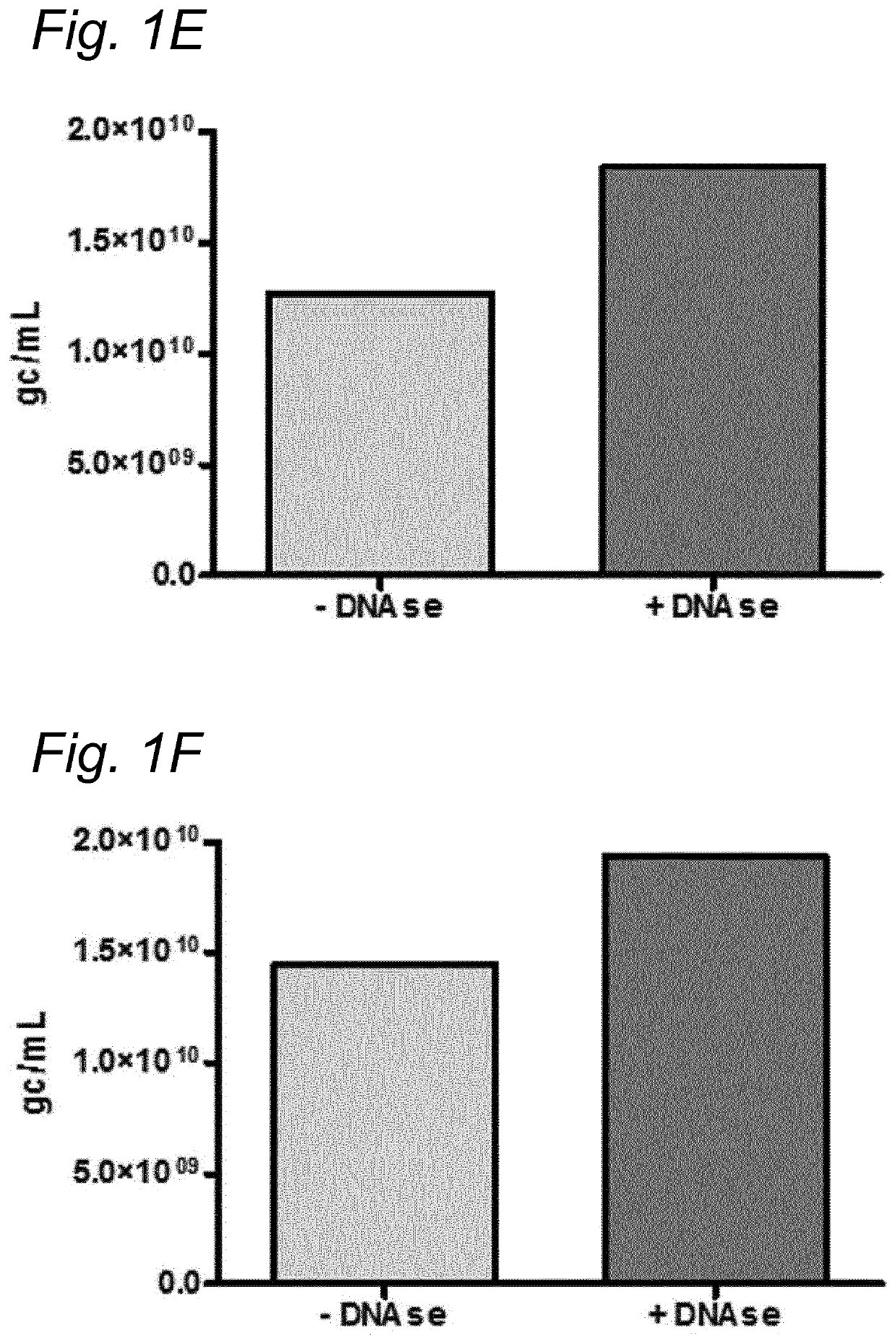DNA impurities in a composition comprising a parvoviral virion
a technology of parvoviral virion and impurities, applied in the field of virology and gene therapy, can solve the problems of virtually impossible separation, drastic underestimation of the dna impurities present in the composition, and inability to completely eliminate unwanted dna, etc., and achieve the effect of efficient cross-complementation
- Summary
- Abstract
- Description
- Claims
- Application Information
AI Technical Summary
Benefits of technology
Problems solved by technology
Method used
Image
Examples
example 1
DNA Impurities in Manufactured rAAV Vectors
1.1 Material and Methods
[0169]To investigate whether the residual DNA was packaged in AAV1 particles, it was tested whether the residual DNA was DNAse resistant. The samples were treated with Benzonase (9 U / mL) and the amount of DNA was analyzed using Q-PCR.
[0170]DNA was isolated from the samples followed by Q-PCR using three different primer sets (59 / 60, 180 / 181, 340 / 341). To study the DNAse resistance of the baculovirus DNA, for some samples the DNAse step was omitted (indicated as without DNAse). The data were analyzed using PLA analysis and for each sample the ratios of the amounts of DNA amplified by the different primer sets was determined.
[0171]The amount of AAV1 DNA was determined using Q-PCR with primer set 59 / 90 targeting the CMV promoter of the AAV1-transgene vector. The quantification of residual baculovirus DNA was performed using Q-PCR with baculovirus-specific primers. The experiments were performed using two different primer...
example 2
Determining Nucleic Acid Impurities Using Q-PCR
2.1 Material and Methods
[0186]To further investigate which parts of the baculovirus genome were present in the samples and possible differences in the amount of different sequences, Q-PCR with different primer sets (See FIG. 2) was performed. For each primer set a standard line was included in the experiment. The amount of transgene copies was determined using primer set 59 / 60. Subsequently, the relative amount of genome copies as compared to transgene copies was determined. Since it is known that AAV particle may incorporate longer DNA sequences than the length of its own genome (Grieger et al. 2005, Allocca et al. 2008) the primers were chosen at the start and the end of the ORFs flanking the transgene cassette and 10 kb up- and downstream of the ITRs.
2.2 Results
[0187]The amount of baculovirus DNA was determined using primer set 340 / 341, amplifying amplicon 73555-73604 that is located close to the hr3 sequence of the baculovirus. It w...
example 3
Determining Nucleic Acid Impurities Using Next Generation Sequencing
3.1 Material and Methods
[0188]To investigate the extent and origin of the DNA impurities in manufactured rAAV vectors, four different batches of rAAV vectors were analyzed by deep-sequencing. DNA was isolated from these rAAV vectors using the NUCLEOSPIN® extract II kit (Macherey Nagel, Duren, Germany).
[0189]This DNA was used to prepare the deep-sequencing libraries.
[0190]In order to create separate sequencing features an in situ hybridization is performed. Clusters are accomplished by limiting dilutions of an initial material. The DNA fragments are melted and the single strands are trapped inside the flow cell which is covered by a dens lawn of primers. Subsequent local amplification (bridge PCR) leads to formation of cluster of approximately 1000 identical molecules per square micrometer. The base incorporation starts by adding primers, polymerase and four flourophore-labeled deoxynuclotidetriphosphates. The dNTPs ...
PUM
| Property | Measurement | Unit |
|---|---|---|
| surface area | aaaaa | aaaaa |
| nucleic acid sequencing | aaaaa | aaaaa |
| purity | aaaaa | aaaaa |
Abstract
Description
Claims
Application Information
 Login to View More
Login to View More - R&D
- Intellectual Property
- Life Sciences
- Materials
- Tech Scout
- Unparalleled Data Quality
- Higher Quality Content
- 60% Fewer Hallucinations
Browse by: Latest US Patents, China's latest patents, Technical Efficacy Thesaurus, Application Domain, Technology Topic, Popular Technical Reports.
© 2025 PatSnap. All rights reserved.Legal|Privacy policy|Modern Slavery Act Transparency Statement|Sitemap|About US| Contact US: help@patsnap.com



